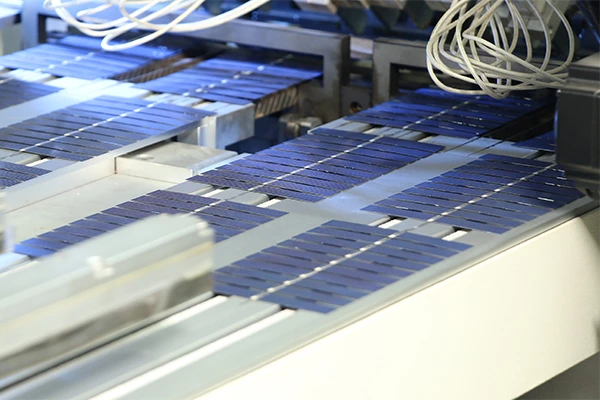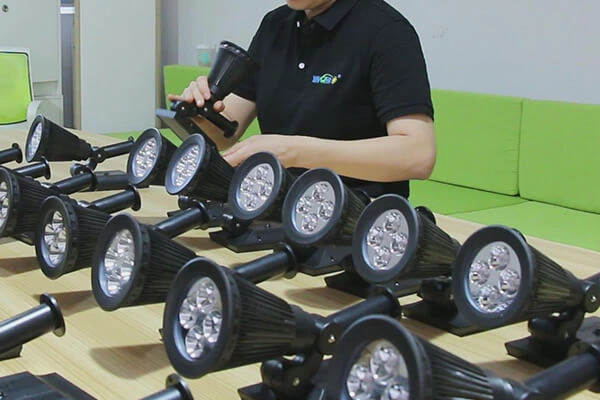The Ultimate Guide For Solar Lights
Did you know? By 2023, using eco-friendly outdoor lighting could cut carbon emissions by over 100 million tons.
By choosing these lights, you're not just reducing the global carbon footprint, but it's also crucial to understand their pros and cons. And don't forget, considering their quality and suitability is just as important when making your choice.
What is solar lighting
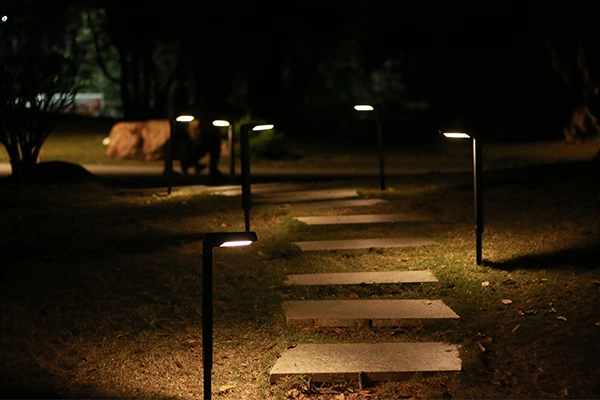
Solar lighting, a revolutionary technology, leverages natural resources to shift our reliance away from traditional energy sources. This lighting method captures sunlight using solar panels and converts it into electrical energy to power lighting devices. During the day, the solar panels absorb and convert solar energy, storing it in batteries, and at night, this stored energy is used for illumination.
Solar lights are a form of lighting that is independent of the traditional power grid and are particularly suitable for remote areas or outdoor environments where there is no electricity supply. Due to the use of renewable energy, it has a very low impact on the environment. Solar lights are used in a wide range of applications, from simple home gardens to complex city streets, demonstrating their great potential as a sustainable and cost-effective lighting solution.
What are the Main Components of Solar Lighting?
Solar Panels
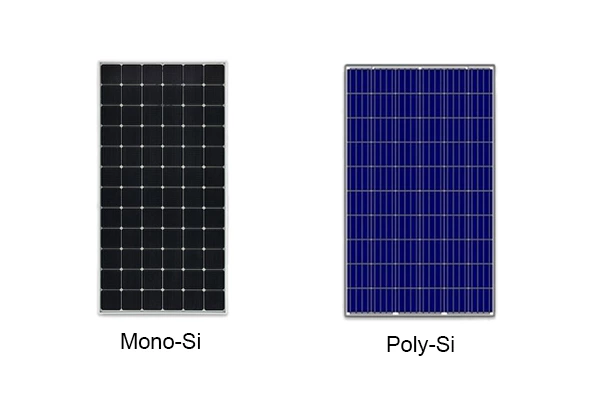
Solar panels are the key components in solar lights, responsible for converting sunlight into electrical energy. The main types and their characteristics are as follows:
- Monocrystalline Silicon Panels: Renowned for their high efficiency and durability, these panels typically have an energy conversion rate of about 15%-20%. They are particularly effective in conditions of ample sunlight, making them suitable for environments with strong light exposure, which is reflected in their higher price.
- Polycrystalline Silicon Panels: The conversion rate of these panels generally ranges between 13%-16%, making them suitable for areas with weaker sunlight. Although slightly less efficient than monocrystalline panels, their lower cost makes them an economical choice.
At Yinghao, we not only focus on the selection of panels but also own our photovoltaic panel manufacturing workshop, ensuring that each panel meets the highest standards of quality and efficiency.
Battery Storage
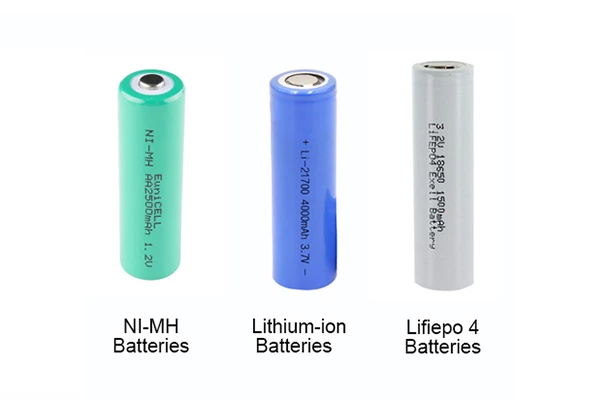
In solar lights, batteries are used to store the electrical energy converted from solar energy for use at night. Common types of batteries include:
- Lead-Acid Batteries: These batteries are affordable but larger, and suitable for fixed installations. Typically, their lifespan is about 3-5 years. Lead-acid batteries are appropriate for large solar lighting systems but require regular maintenance.
- Lithium-Ion Batteries: Smaller in size and lighter in weight, these batteries have a high energy density and a typical lifespan of around 5-7 years. They are especially suitable for portable and compact solar lights.
- Lithium Iron Phosphate (LiFePO4) Batteries: A type of lithium-ion battery, they are known for their longer lifespan (usually 7-10 years) and better thermal stability. These batteries are safer and more durable, albeit slightly more expensive, making them ideal for solar lighting systems that require long-term, stable operation.
At Yinghao, we place great emphasis on quality control. To ensure that every battery used in our solar lights meets the highest performance standards, we employ advanced testing equipment to verify their performance and lifespan. Such quality assurance measures ensure the high quality of our batteries, thereby guaranteeing the overall reliability and long-term durability of our solar lights.
Lighting Source
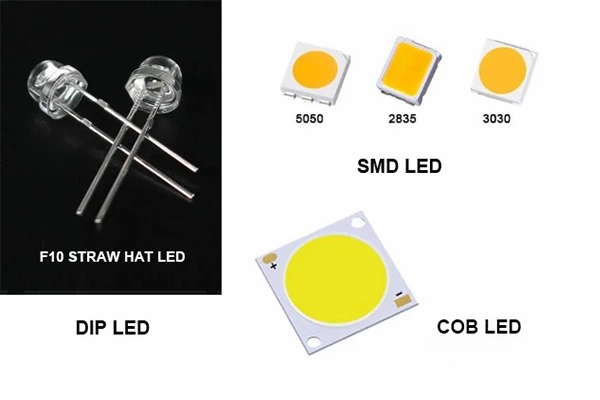
The efficiency and durability of the lighting source are crucial in solar lighting fixtures. Here are the three commonly used types of lighting sources, also frequently utilized in Yinghao's products:
- LED Lights: Known for their high energy efficiency, long lifespan, and low energy consumption, LED lights are the most common choice for solar lighting. They typically offer high luminous efficiency of 80-100 lumens per watt and can last up to 50,000 hours, which is about 80% more efficient than traditional lighting technologies. LEDs provide a stable and uniform light source, available in a range of color temperatures from warm yellow to bright white, meeting everyday lighting needs.
- SMD LED Lights: Surface-mounted device (SMD) LEDs offer a broader lighting angle and higher luminous efficiency, generally ranging between 90-110 lumens per watt. These lights are suitable for illuminating spaces like squares or large outdoor areas.
- COB LED Lights: Chip on Board (COB) LEDs deliver a high luminous efficiency of up to 120 lumens per watt with focused beams, making them ideal for situations that require concentrated lighting and high brightness.
At Yinghao, we utilize state-of-the-art testing equipment to rigorously test each LED in our solar lights to ensure that their brightness, efficiency, lifespan, and stability meet high standards. Through our stringent quality control process, we guarantee the bright, efficient, and long-lasting durability of our products, providing reliable lighting solutions for our customers.
Charge Controller
The charge controller plays a crucial role in solar lighting systems by managing the charging and discharging of the battery, ensuring the system's efficiency and durability. There are two types of charge controllers:
- PWM (Pulse Width Modulation) Controllers: Widely used for their cost-effectiveness, these controllers control the battery's charge state by adjusting the pulse width of the charging current. They are suitable for small-scale solar light projects with limited budgets.
- MPPT (Maximum Power Point Tracking) Controllers: Known for their high energy conversion efficiency, these can improve charging efficiency by 20%-30%. MPPT controllers intelligently adjust the power output based on the solar panel's output and the battery's state, making them suitable for systems that require maximized energy utilization.
At Yinghao, we select the appropriate type of controller based on the specific needs and conditions of the project, aiming to maximize the performance and lifespan of the fixtures. Our expert team ensures that each solar light operates stably under various conditions and achieves efficient energy use throughout its lifecycle. This focus on product details allows us to offer our customers durable and reliable lighting solutions.
Advantages and Disadvantages of Solar Lights
Advantages of Solar Lights
- Eco-Friendly Energy Source: Solar lights use renewable energy with almost zero carbon emissions, minimizing environmental impact. Compared to traditional lighting, they can reduce about 1.2 tons of carbon dioxide emissions per year.
- Energy Efficiency: Solar lights significantly surpass traditional lighting in energy efficiency. Typically, their efficiency is about 80-100 lumens per watt, compared to just 16-20 lumens per watt for conventional lights, enhancing energy utilization by approximately 80% and substantially reducing energy consumption.
- Long-Term Cost Savings: Utilizing free solar energy, solar lights eliminate expensive electricity bills. For instance, if traditional electric lights cost $100 per year in electricity, solar lights can save around $500 over five years.
- Ease of Installation and Maintenance: Solar lights are generally standalone units that do not require connection to an electrical grid, simplifying installation and maintenance while reducing complexity and costs.
- Durability: High-quality solar lights have a lifespan of 5-7 years or even longer, far exceeding traditional lighting fixtures and offering long-term lighting solutions.
- Tax Incentives and Rebates: Some countries in Europe and America offer tax incentives and rebates for solar lighting systems to encourage their widespread adoption. For example, in the USA, installing solar systems can qualify for up to 30% federal tax credits; countries like Germany offer photovoltaic subsidies and other financial incentives.
Disadvantages of Solar Lights
- Initial Cost: While solar lights can save on energy and maintenance costs in the long term, their initial installation cost is higher. For example, the complete setup of a solar lighting system might cost twice as much as an equivalent traditional lighting system.
- Environmental Impact: The performance of solar lights is affected by the intensity of sunlight. During continuous overcast or rainy weather, their efficiency might drop by 40%-50%, impacting the illumination effectiveness.
- Battery Lifespan: Batteries are the most wear-prone components in solar lighting systems. Typically, they need to be replaced every 5-7 years, which adds to the long-term maintenance costs.
- Geographical Limitations: Solar lights are less efficient in high-latitude areas or regions with short daylight hours. In extreme northern or southern locations, insufficient sunlight can significantly reduce efficiency.
- Seasonal Effects: Solar lights perform less optimally during winter or rainy seasons. Shorter daylight hours or weaker sunlight can lead to insufficient battery charging, thereby reducing lighting time.
How to Choose the Right Solar Lights for Your Needs
Outdoor Lighting
When selecting the right solar lights, it's crucial to consider their intended use, location, and lighting requirements. Here are common types of solar lights, along with their main features and application scenarios:
- Solar Street Lights: Ideal for private roads, walkways, or parks. These lights provide stable and reliable illumination, contributing to enhanced safety at night.
- Solar Wall Lights: Suitable for porches, garage doors, and other outdoor walls. They come in various styles, combining compact design and automation features to offer diverse lighting effects without the need for additional power sources.
- Solar Landscape Lights: Designed to enhance the beauty of courtyards, garden paths, or areas around ponds. Their varied styles not only meet lighting needs but also add an artistic touch to outdoor spaces.
- Portable Solar Lighting Systems: Versatile and perfect for camping, picnics, or emergencies. Their lightweight design and multifunctionality make them an ideal choice for outdoor activities.
Indoor Lighting
- Solar Table Lamps: Perfectly blending practicality with decorative appeal, these lamps are suitable for homes, offices, or dining areas. They provide soft, comfortable lighting that reduces energy consumption while adding a cozy atmosphere to indoor spaces.
- Solar Chandeliers: Ideal for indoor spaces with high ceilings, like living rooms or dining areas. They not only provide a wide range of lighting but also serve as decorative highlights that add a unique flavor to interior spaces.
- Solar Music Lights: Uniquely combining lighting with entertainment, these are particularly appealing to young consumers with a flair for stylish living. These lights not only deliver high-quality illumination but also play music, enhancing the indoor ambiance.
Installation and Maintenance of Solar Lighting Fixtures
Installation Considerations for Different Types of Solar Lights?
#1. Preparation Before Installation
- Determine the Optimal Installation Location: Choose the most suitable spot based on the sun's trajectory and the layout of the garden to ensure maximum sunlight exposure for the solar panels.
- Clean the Installation Site: Clear any obstacles in the installation area to prevent shading of the solar panels.
- Prepare Basic Installation Tools: Gather necessary gardening and installation tools, such as shovels, screwdrivers, drills, ladders, etc.
#2. Solar Street Lights
- Install in a location with ample sunlight, avoiding shadows or obstructions.
- Adjust the installation height and angle according to the required lighting range and intensity.
#3. Solar Wall Lights
- Install on outdoor walls that receive direct sunlight and are less likely to be obstructed.
- Adjust the height as needed to provide effective illumination.
#4. Solar Landscape and Decorative Lights
- Consider the surrounding environment and elements during installation to ensure sufficient space for sunlight reception.
- Arrange appropriately to enhance aesthetic appeal and lighting functionality.
#5. Portable Solar Lighting Systems
- Although portable, ensure the solar panels face the sun to maximize charging efficiency.
- Choose an unobstructed location when used for camping or outdoor activities.
#6. Safety Precautions
- Ensure that the power is turned off before installation to prevent damage to electronic components.
- Use safe and compliant tools and ladders to ensure safety during the installation process.
- After installation, conduct a thorough inspection to ensure that all parts are correctly installed and securely fastened.
How to Maintain Solar Lights?
Regular solar panel cleaning: Regularly remove dust, dirt, or snow from your solar panels to maintain optimal charging efficiency. A soft cloth or non-abrasive cleaner is recommended.
- Regular Inspections of Light Fixtures and Components: Regularly inspect your solar light bulbs, batteries, and housings for signs of damage or wear. Replace damaged parts to keep the fixture in good condition.
- Winter Maintenance: Due to reduced daylight hours and the potential for snow accumulation during the winter, solar panels need to be inspected and cleaned more frequently. Make sure snow and ice do not cover solar panels.
- Adjust the angle of the solar panel: Adjust the tilt angle of the solar panel according to seasonal changes to ensure sufficient sunlight.
- Post-storm inspection: After experiencing severe weather, such as a storm or strong winds, check whether the solar lights are stable and whether the solar panels and lamps are damaged.
Conclusion
Partnering with Yinghao, a professional solar lighting manufacturer, brings you dual advantages: top-notch green lighting solutions and great value for money. Our technological innovations aim not only to light up your spaces but also to promote a green lifestyle.
Contact us if you have any questions about solar lighting.
FAQ (Frequently Asked Questions)
# How efficient is solar energy on rainy days or in winter?
The efficiency of solar lights does suffer on rainy days or in winter because the intensity of sunlight is weaker in these conditions. While solar panels are most efficient under clear, full-sun conditions, modern technology allows them to continue to capture energy on cloudy days, with efficiencies ranging from approximately 10% to 25%.
For winter, solar panels can still work effectively if they are not covered by snow. However, the focus of maintenance at this time is regular snow removal to ensure adequate sunlight and continued energy conversion.
# How long is the service life of solar energy?
The overall service life of solar lamps is generally 5-7 years, but this also depends on the quality of the battery and LED bulbs. The lifespan of the solar panels themselves is typically 20 years or more. However, it is worth noting that in order to maintain efficient operation of the system, the battery part needs to be replaced within 5-7 years. This kind of maintenance ensures that solar lamps can operate efficiently for a long time.
# What are the terms for solar lamps?
Photovoltaic (PV): refers to the technology that converts light energy into electrical energy. It's like using the sun's energy to generate electricity, which is then used to light up the LED bulbs in solar lights.
LED (Light Emitting Diode): A type of lighting known for its energy efficiency and longevity. You can think of it as a light bulb that uses less power but provides the same amount of light as a traditional light bulb.
Lumens (lm): Lumens are a measure of the brightness of light. The higher the lumens, the brighter the light. For example, an 800 lumen solar LED light will be much brighter than a 400 lumen solar LED light.
Watt (W): A unit of power. How much electricity a solar panel can produce under ideal conditions.
Color Rendering Index (CRI): Indicates how realistic artificial light is compared to natural light. A higher CRI means colors will look more natural in that light.
Kelvin (K): This refers to the color temperature of light. Lights with a higher Kelvin value (such as 5000K) are cooler and whiter and are commonly found in kitchens and offices. Lower Kelvin lights (such as 3000K) are warmer and give a cozy feel suitable for living spaces.
Ampere (Amp): Unit of electrical current. In solar lighting, the key is how much charge flows from the panel to the battery or light.
Battery Capacity: Measured in ampere hours (Ah) and indicates how much energy a battery can store. Think of it like a fuel tank for a solar light - the bigger it is, the longer the light will run.
Charge Controller: This device manages the power from the solar panels to the battery. It acts like a manager, making sure the battery doesn't get too much or too little charge.
Automatic switch: automatically turn on the lights when it gets dark and turn off the lights when it gets light. It's like having a smart assistant that controls the lights for you based on daylight.


